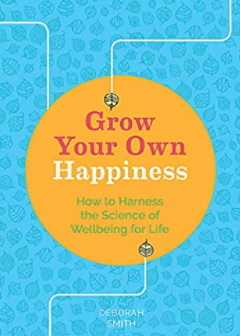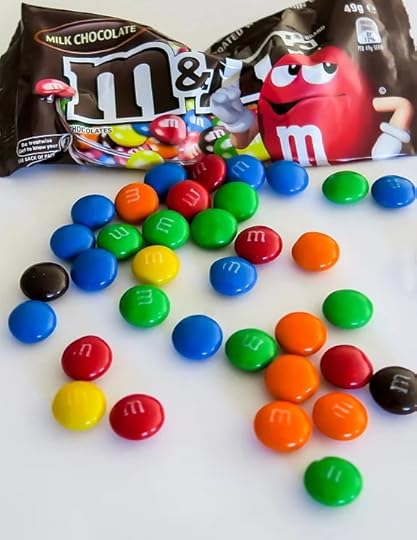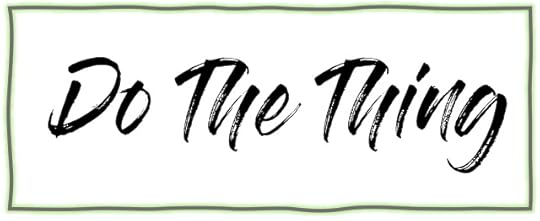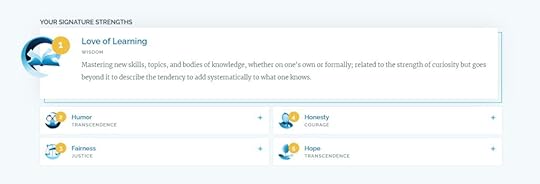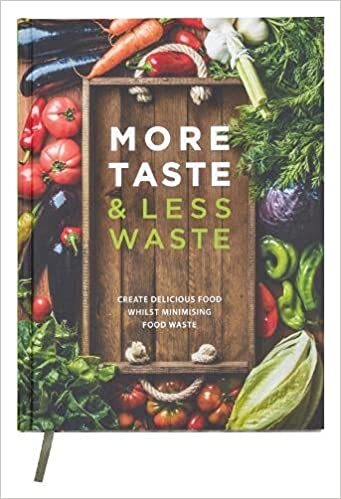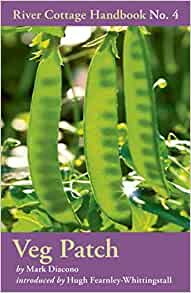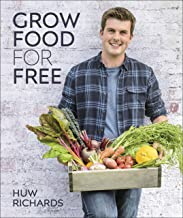Amy C. Fitzjohn's Blog, page 6
April 22, 2022
The Regular Life Audit
‘Our lives should be in constant audit’ – Chris Packham
Making informed choices about what we consume and how we lead our lives can be overwhelming and exhausting.
It’s an uphill struggle when you do all you can to make an informed decision yet the choice just isn’t available to you.
I’m Talking to you, SupermarketsTake supermarkets, for example. I started considering my year without supermarkets last year.
It was during an especially infuriating trip to Asda.
I wanted a couple of things and couldn’t find them without plastic packaging.
I wanted natural yoghurt. There is an entire aisle of yogurt, a baffling array of the stuff. Yet every single package was single use plastic.
And bread. It was baked there in the bakery, still warm from the oven. It was packed immediately into plastic. It could have been left loose, it could have been packed in paper. But no. Only unnecessary waste is good enough for Asda.
At the checkout, with my single lemon and a couple of cans of food, but nothing else from my list, I looked around and saw nothing but a sea of plastic in everyone’s baskets. It was utterly repellent.
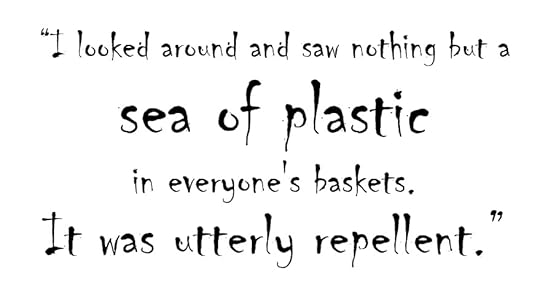 Love Your High Street
Love Your High StreetI’m fortunate, I live in Bristol and my local high street, Bedminster, is well provisioned with some excellent shops. Notably, big retailers are leaving East Street, but small, independent shops, cafes and delis are moving in.
More of this please! Everywhere!
If I lived somewhere more remote, I may have no other choice. When we lived in North Petherton in Somerset, at the time, our only option was to get in the car and drive to a big supermarket to get food.
It was that experience in Asda that finally made me stop and say,
“You know what, forget you Asda et al.
Why am I wasting my time trying to scour the aisles for ethical products when I have plenty of great alternatives locally?
I may have to make more of an effort to shop in multiple locations, but at least I won’t be complicit in your wilful destruction of the environment. Plus, I will be supporting small businesses that do give a toss!”
I won’t be complicit in your wilful destruction of the environment.
Small changes, regularly, mount up and make a difference over time. You won’t get it right first time. A regular audit will keep you on track. You can’t do all the things all at once. Sometimes, you have no option but to compromise and you need to appreciate the value of things and accept paying a fair price for them.
Buy less but spend more – it may sound counterintuitive, but most of us could probably agree we have reached ‘peak stuff’.
Rather than focussing on the cost of everything and appreciating the value of nothing, we can buy less but buy better.
Acknowledging PrivilegeA caveat to that. I don’t want to be tone deaf in the face of the brutal cost of living crisis we are facing right now. I’m not so much appealing to the unprecedented number of people living in extreme poverty in the UK, here.
I am appealing to people that can make more ethical choices but don’t, or don’t know how to. YOU have the power in your pocket to hold supermarkets and other ethically dubious businesses to account, by voting with your pound.
That said, we can all benefit from being more empowered about our food, especially those who are struggling. And we can all benefit from better access to secure food, without relinquishing our power to a handful of massive corporations.
Aiding and Abetting PovertyI am arguing that supermarkets are aiding and abetting poverty. By pushing prices down to unsustainable levels, while passing the pain of those cuts onto producers, low paid workers and other stakeholders in their lengthy supply chains.
I realise it’s not as simple as this, but here’s a thought:
Supermarkets, pay a decent amount for food in the first place. Shorten their supply chains, so fewer links need to eek out a measly profit to survive. Offer fewer but better and more sustainable choice – we don’t need 15 kinds of baked beans, offered in various sizes, and packaging and multiple brands! Then, pay your staff a decent wage and stop using loopholes in employment law to get the taxpayer to subsidise your unethical business practices by picking up the slack with in-work benefits. How about you choose to make less profit for your shareholders and offer better value, instead of ‘cheapness’ to consumers? How about you do something about the 30% of food that just gets wasted before it even reaches the consumer?How about you invest resources and research into producing food locally? And stop with the frigging single-use plastic!Use Your PowerKeep an eye out for better, more sustainable products and services, new things pop up all the time. Research better alternatives for every day things. Educate yourself and hold the retailers to account.Sign petitions: Tesco Industrial Meat PetitionSingle Use Plastic Petition
This isn’t something that you can change overnight. Do so incrementally. A simple swap, here and there, regularly, accumulates over time.
Regularly audit how you live your life.
Here are three top tips to start regularly auditing your life:
1) Consider where you buy
Is there a more ethical retailer? What about buying in bulk, direct from the producer?
Shop locallyUse your local greengrocerGo to the butchers – eat less but better and more ethical meat. (Instead of industrial, planet killing, rainforest depleting, meat from the supermarket!)Use zero waste shopsBuy direct from the producer. (More money to the producer, less for the planet killers).Frequent your local shops. (Your money will sustain families instead of corporations).2) Question what you buyDo you need it? Can you get it in sustainable packaging? Is there a better product?
A common objection for not shopping elsewhere is the habit of getting the same products every time.
“But they don’t sell the stuff I get.” Is not an excuse to refuse to change, it is a reason to question your choices.
Think of it as an adventure, instead of a chore. You may even discover something better than ‘what you usually get’.
For example, for years I bought Sun Pat Peanut butter, then I discovered the fresh peanut better dispenser at my local Zero Waste shop. OMG. I would never go back! It may cost a bit more but it’s SOOOO worth it. My peanut butter on toast is next level delicious now.
Also, Rubies in the Rubble ketchup. Just wow. Heinz is a vinegary goo in comparison. Bonus, it can be refilled at the Zero waste shop.
Is it time you did an audit of your regular shopping list?
3) Declutter the stuff.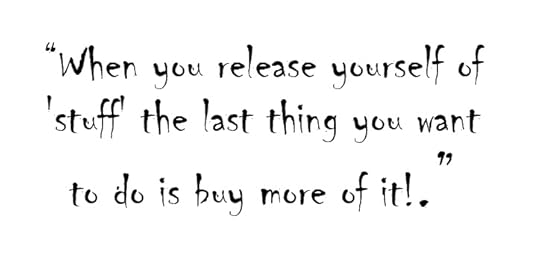
A good clear-out often makes you realise that you don’t need that new thing. You may already have something you have forgotten about. It also feels good to audit then minimise the stuff cluttering your space. Get really good at minimalizing and you may even find you can live somewhere smaller and cheaper!
When you release yourself of ‘stuff’ the last thing you want to do is buy more of it!
The post The Regular Life Audit appeared first on Amy Morse.
April 13, 2022
What Marketing Tasks Should You Outsource?
One of the hardest things to accept when you work for yourself is that you don’t have to do everything yourself. However, if you want to achieve your goals as a business, sometimes it’s better to outsource. Save yourself time, money and frustration by giving the work to someone who knows what they are doing so you can get on with the business of running your business.
This contributed content shares ideas and key areas that you may wish to outsource instead of struggling along yourself.
OutsourcingYour time is your most precious resource if you’re a busy business owner. To get the most out of your time, don’t simply work more or put in more hours; instead, hire someone else. In other words, outsource.
One of the most difficult things for an entrepreneur to do is to outsource their work. Yet you’ll find it’s also one of the most crucial. Weighing yourself down with a variety of pointless responsibilities reduces your capacity to expand your business. An entrepreneur who hires people to perform work for them is a successful and developing one. So, what aspects of marketing can you contract out? Here are just a few to get you started.
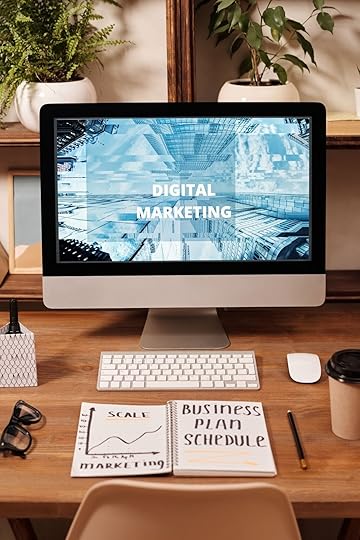 Creating Visual Content
Creating Visual ContentIn today’s marketing landscape, visual content marketing is a must-have tool. However, as important as it might be, it takes a long time to produce visuals that are both clear and appealing. In terms of time and money, outsourcing the job is more cost-effective than doing it yourself. You could take your marketing to the next level by enlisting the help of a talented designer.
Creating InfographicsEven if you’re a Photoshop whiz, making an infographic takes a lot of work, and it is highly likely that your skills as an infographic creator pale in comparison to those of professionals. Of course, you need to be honest with yourself; you need to know where your talents lie and where they don’t if outsourcing is going to be profitable.
In order to create an infographic, you may need to enlist the services of both a researcher and a designer. The researcher comes up with the concept and conducts the research for the infographic, while the designer takes care of the remainder of the design. Do you have time to do all of this and run your business at the same time?
Website DesignSince the introduction of the internet, website design has been an outsourced activity. If your company requires a large and sophisticated bespoke website, it is preferable to leave it to the specialists. The appearance and functionality of your website are critical since it is the first impression most prospective customers will have of your brand and sets the tone for your future connection.
When you initially look at the rates for a custom website, it may seem to be a waste of money, as it does with other outsourcing selections. However, since your website will be a component of your brand identification for years to come, it’s worth including outsourced website design in your digital marketing budget. You might also choose to add marketing translation services to this budget for your website; if you can translate some blog posts and information, this will give you far more reach.
SEOSEO is another area where it helps to have a specialist on your side. When it comes to SEO, you need to know a lot about Google’s algorithms, statistical analysis, and lots of trade secrets in order to optimise your website and its content. To make things worse, SEO methods are continually evolving, necessitating a time-consuming and resource-intensive study procedure. Clearly, having someone else focus on this is a much better idea than trying to do it yourself.
The post What Marketing Tasks Should You Outsource? appeared first on Amy Morse.
April 6, 2022
Alternatives To Plastic Packaging
I’m not going to pretend to know anything about materials science. I’m not a packaging expert. But as nothing more than a conscious consumer, I know there are better, sustainable, alternatives to single use plastic. I’ve seen them, I’ve bought them, I use them.
This is one of those blogs that I could endlessly add to as new products and alternatives come onto market, but at some point I have to get it out there and share the journey so far.
Living more sustainably is a journey, after all. Change takes time and we can only do so much as individuals.
The challenge is for big food and consumer goods producers and supermarkets (who control the food system here in the UK) to step up and give consumers better alternatives.
Why Recyclable Packaging is Not the Answer
The links and info here are just a few things I, as a conscious consumer and layman, have found.
So what excuse do the supermarkets have for not doing this?
I’m angry, furious, in fact that supermarkets act so irresponsibly when it comes to packaging then shift responsibility for their culpability to individuals. Even then, when we ‘recycle’ we can’t be confident that plastic in particular is in fact recycled.
Every time I see ‘recyclable’ printed on plastic packaging it enrages me. It may be able to be recycled but it probably won’t be and that’s not the point – the producer is still shifting the responsibility to individuals and that’s just flippant, cynical, greenwashing.
Take coffee cups as an example,
“Cups are technically recyclable, something that some coffee companies actively promote on their packaging.
However, due to the complicated way in which they are produced, the vast majority of coffee cups do not end up being recycled.”
Source article in the Independent
‘Recycling’ is the last resort, let’s not produce this horrible harmful single use plastic stuff in the first pace!
Especially when there are alternatives…
It’s time for a packaging attitude shiftWe treat packaging as disposable. This is a relatively new phenomenon. Only in the second half of the 20th century, when access to cheap plastic became universal and abundant for producers and retailers.
This wasteful lifestyle is literally killing us and the planet. Enough is enough!
What excuse do supermarkets have not to use these alternatives?This year, my year without supermarkets, I will write a lot about about the plastic pollution crisis. It’s one of the main reasons I’m avoiding supermarkets. Together with the various issues when it comes to our broken industrial food system, that aids and abets poverty and climate change.
One thing in particular is good at is keeping food fresh, while simultaneously being grossly disproportionate in the amount of pollution is creates at every stage in its lifecycle – single use plastic, largely in the form of cellophane and polythene.
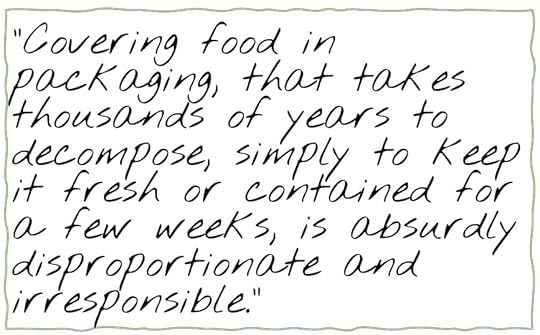
It could be argued that the volume of food that would otherwise go to waste due to rotting before getting to the consumer outweighs the unsustainable use of single-use plastics.
If there were no alternative materials available, that may be the case. However, there are alternatives. Aside from changing our purchasing habits, there are packaging products available that could replace the majority of single use plastic we waste.
Government and Retailers Must Act NowThe onus is on retailers and producers to use these alternatives before they get to the consumer.
That one act at point of sale would change the world.
It’s time governments taxed single use plastics to the point that they become too expensive to be profitable. Retailers will only change if regulators force their hand. There is only so much power consumer spending has to influence their supply chain and packaging decisions.
If the UK government is serious about Net Zero, and since they are so strapped for cash they have to cut public services and support. Taxing single use plastic would be a big boost to their coffers. It would have a massive impact on the inexcusable and unsustainable mountains of waste we create because of irresponsible retailers and producers.
That is an inconvenient and indisputable fact.We will run out of oil (the raw material from which plastic is derived). During the lifetime of the next generation.
We need to stop thinking of packaging as disposable and start realising that it is a resource.
The planet cannot sustain our levels of resource-stripping.
There is much talk at policy and decision makers’ level about the development of new technology to get us out of the mess of our own making. But much of it already exists.
The time to act is now. Not waiting in hope that some clever tech company will invent a magic bullet to combat our waste crisis.
There are packaging products available already that are an effective facsimile/alternative to plastic and cellophane in particular.
Your bag of salad would still look the same. But instead of plastic waste that takes hundreds of years to compose for the sake of keeping the greens fresh for a week, alternatives decompose in your compost in a few weeks.
Here are some examples of packaging that you may already be familiar with and others that may not be so familiar.Compostable bin linersIf you buy can buy rolls of compostable bin liners for your food caddy. Why not use the same material for other food packaging alternatives?
Loose Food BagsIt irritates me when I see a display of loose food – fruit and veg, sweets etc. – but the bags supplied to collect them in are plastic!
I want a ban on polythene bags, replacing them with paper bags in the greengrocers and on the pick n mix counter instead.
Take Away ContainersIf your egg fried rice can arrive in a carboard package, why can’t other pre-prepared meals?
This is a simple change a business could make, before it gets to the customer. There is a large catering supplies company in Bristol, Patterson’s. It’s where small producers would buy packaging in bulk i.e. takeaway cartons.
There are plenty of plastic products in the e-commerce shop, but there is also a good selection of alternatives. The biodegradable packaging maybe a few pence more per unit. However, personally I’d happily (and probably wouldn’t notice) a few pence extra on the price of my premade sandwich or street food lunch if it was in biodegradable packaging.
Take Away CoffeeWhen I’m out and about, I’ll usually sit in for my cappuccino. But, on the odd occasion, for example at the train station, I have to be honest and say I get that takeaway coffee.
However, takeaway coffee so rarely features in my world that I don’t carry my own coffee cup. I tried carrying a fold up silicone cup in my bag for a while, but everything tasted of plastic and several times I burned myself when it collapsed on me.
Great idea, rubbish product.
In the UK we throw away 2.5 billion coffee cups and their plastic lids per year (that was 2018, it’s probably more now!).
This is completely unnecessary because there are biodegradable alternatives.
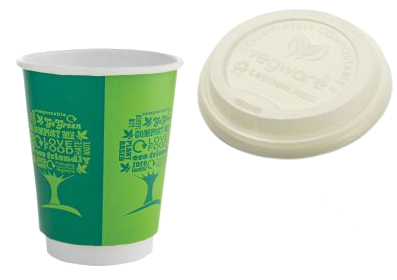 Vegware compostable coffee cup and lidSticky Tape
Vegware compostable coffee cup and lidSticky TapeWrapping gifts, craft projects and little fixes. We reach for the Sellotape. But, I found this great product in Wilko – plastic free Sellotape. It’s just as sticky as the regular plastic tape (you wouldn’t even know the difference). It’s stickier than the next best alternative, brown paper tape.
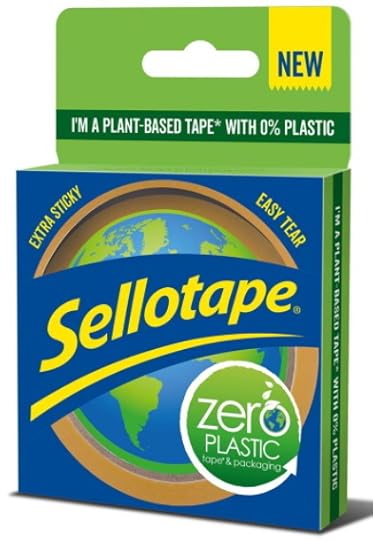
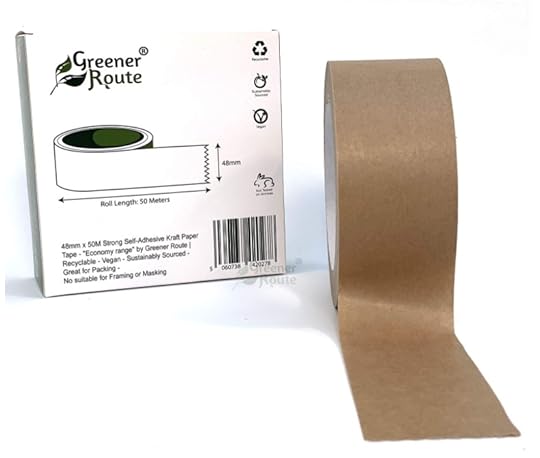 Crisp Packets
Crisp PacketsIn our local bar, The Old Bookshop, I was reading the packet of crisps and saw it was biodegradable, compostable packaging. It felt, looked, and seemed like an ordinary crisp packet (if anything it was stronger) but it was plastic-free.
When I got home I ordered a box from Two Farmers. I never need to randomly buy packets of plastic covered crisps from the local shop again.
If Two Farmers can can sell crisps in this packaging, then what excuse do Walkers have?
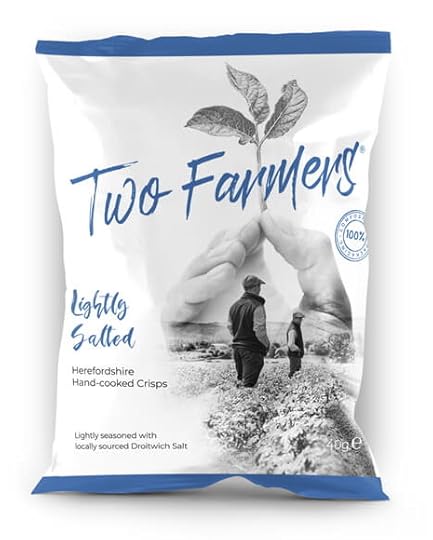
Get the yummy crisps here:
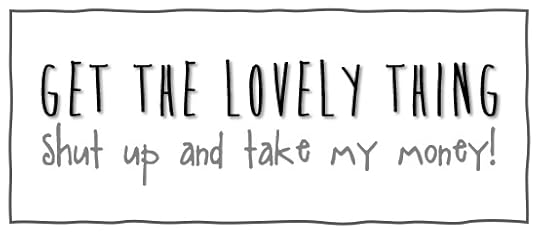 PS: This isn’t an affiliate link, I just love this stuff!More Packaging Alternatives
PS: This isn’t an affiliate link, I just love this stuff!More Packaging AlternativesAttitude Organic has a few blogs and articles on alternatives. Including this list of 8 alternatives – some are obvious and well used but could be used for other products, such as glass.
There are plenty of products that currently come in plastic that could be sold in glass instead. There are already glass packaged versions sold. Show retailers what you want by voting with your money and always choosing the glass packaged version.
Always buy your condiments and oils in glass.Ketchup, mayo, brown sauce, oil, mustard etc. The plastic and glass versions are often the same brand and displayed together on the shelf!
You can always have a reusable squeezy bottle at home to dispense your ketchup if you really must have the squeezy version. But what’s wrong with glass? Many zero waste shops also sell refills of ketchup, vinegars and oils.
Glass can (and is) recycled over and over (unlike plastic).
Eco-Friendly packaging: Eco-Friendly Packaging: What Is and Its Advantages – Attitude OrganicLondon’s Plastic free supermarket: Britain’s First Plastic Free Supermarket opens in London – Attitude OrganicAnd there is, of course, always the option of reusable packaging…
What brilliant packaging alternatives have you seen?The post Alternatives To Plastic Packaging appeared first on Amy Morse.
March 23, 2022
How I Book Appointments And Take Payments Online (For Free)
“How can I get people to book and pay?”
It’s a question I get asked a lot when supporting micro enterprises.
Being in business is not easy but you can keep it super simple.
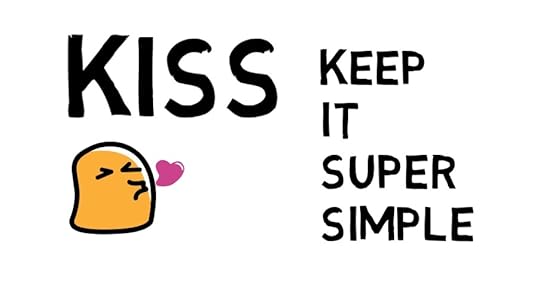
I use a free platform for my online booking: 10to8.com
As long as you keep your online calendar updated, it will update the bookings calendar, too.
I use MS Outlook but it also works with other calendars like Google and Apple.
You also need to remember to login at least once a month to keep the free package and calendar link, but if you are regularly picking up appointments you’ll do that anyway.
SetupOnce you create your login, it can be a bit of a faff to set it up, but well worth dedicating the time to explore the features and set up an online booking system properly.
This is the dashboard and set up area. I have set up a range of different services.
The ones I use the most are:
FREE initial consultation – ‘Inspiration Call’.Power Hour (£50)Or discounted hour for newsletter subscribers, ‘Subscriber Special’ (£45) Integration
IntegrationIt integrates with PayPal so people can also book and pay online.
It also integrates with other software, too. If you use a few different packages, it could be a neat way to keep everything on one place. You may have to pay for these extra features, but if you have volumes of calls and a few people using the calendar, it could be a good value option.
Personally, I’m a bit of technophobe and try to keep mine minimal so I have set it up with Zoom. When a booking is made, an auto email goes out with the Zoom link.
The free version is fine for me as I don’t use all the features, just the bookings and payments and I don’t have many calls to manage through it.
Who can use itFor any business that books time slots and uses a dairy system, this is a great platform and you can include the link on your website, socials etc.
For example: therapists, coaches, trainers, beauticians, consultants, etc.
More InformationHere’s a handy article on how you can make online booking work for your busines – READ MORE
PS: this isn’t a sponsored post and there are no affiliate links. I just want to help.
The post How I Book Appointments And Take Payments Online (For Free) appeared first on Amy Morse.
March 16, 2022
How To Write an eBook – Two Small Tips That Make a Big Difference
It is much simpler to publish your own eBook than you may imagine. Although publishing it may be as simple as uploading a file into Amazon’s KDP platform, the process of actually writing that book is by no means an easy one.
Why Write an eBook?This useful blog by Visme shares some links and tips to put together your own eBook. It includes lots of great info about researching your topic and audience as well as templates to design your book ready to upload.

Although this blog discusses using eBooks as Lead Magnets, they can also be a great way of monetising your existing content.
I’m not going to mislead you into thinking you can suddenly make a fortune selling eBooks on Amazon. However, over time, with enough of them, they can be a extra revenue stream in your business.
How Do You Write a Book?Without wishing to sound flippant, the short answer is ‘one word at a time’. But sometimes, that’s easier said than done.
They say we all have a book in us, and while that may be true, it doesn’t necessarily mean you should write and publish that book!
Although many people dream of writing a book one day, far fewer of us actually do it.
Writing a book is a marathon, not a sprint.
The ease of self publishing means that it has gained a reputation for poor quality books..
However, I would argue that Amazon, and consumers, are more sophisticated than they were a few years ago when self publishing platforms like KDP (Kindle Direct Publishing) first emerged.
A bad book simply won’t sell and will soon slide out of the algorithms’ reach. Bad books have a way of making themselves obsolete thanks to algorithms.
If you are ‘self’ publishing your own eBook – that doesn’t mean you have to do it all yourself.
If you want your book to be read (found and bought), get help. Even if it’s asking a critical friend to proof read it. Our brains have a way of reading what it thinks it’s written so it’s easy to miss your own typos, spelling and grammar errors. At the end of the day, your business and reputation are at stake.
A bad book reflects badly on you.
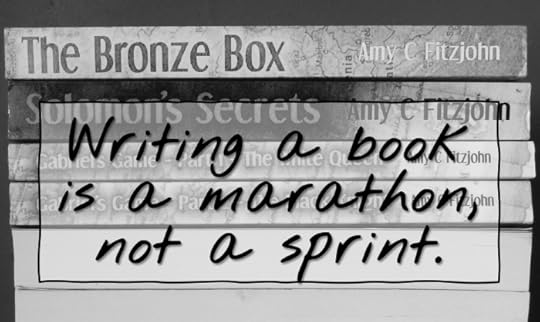
That may all sound off putting, so let’s get some perspective.
If you want to write and publish a book, here are my two pro tips to help you get there:
1) Build Your Book With BlogsWriting is like exercising. The more you do it the fitter you get. It’s also easier to maintain your level of fitness and stamina by doing a little, often.
One of the best ways to form the healthy writing habits you need to maintain the stamina to finish that book is to blog regularly. Those blogs can then by repurposed into the chapters of your book. That’s exactly what I did when I wrote my ‘Blogging for Business’ book (updated in 2022).
Not only do you get the immediate marketing benefits of publishing a fresh piece of content, but you are also one chapter closer to finishing the book. Depending on how prolific you are as a blogger, this means you can complete the content for your book in a few weeks.
You ‘add value’ by compiling those blogs into an easily digestible format (an eBook) and inevitably, you will rewrite, edit, add and change sections to suit the book, therefore creating a new product with little extra effort. Win.
2) Voice TypeWrite quickly by using dictation tools.
A quick way to capture ideas and write content is to use the voice typing function on your phone.
By ‘speaking’ your writing, readers can literally hear your voice and tone in your content.
Here’s How
– Open an email on your phone
– Address it to yourself
– Tap in the text area
– Select microphone icon on the keyboard
– Speak and it will type
– Send message
The advantage of emailing it to yourself is the message will be waiting for you to deal with when you are next at your computer, rather than languishing forgotten about on some app deep in your phone!
Need a little help making your book a reality?
Book a FREE INSPIRATION CALL with me…
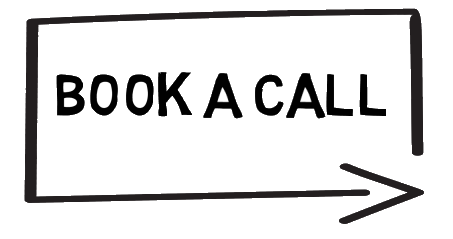
The post How To Write an eBook – Two Small Tips That Make a Big Difference appeared first on Amy Morse.
March 10, 2022
A Life Without Technology – How Far Would You Go?
In the pursuit of living a sustainable, accountable and ethical lifestyle, some people are prepared to go much further than others.
Mark Boyle, The Moneyless Man, went a whole year without using any money. His book is fascinating and makes you realise just how dependent everything in our lives is on the financial system. And how broken that system is.
Another of his experiments, and the book to accompany it, was his decision to go a full year rejecting all technology.
The Way Home, Tales From A Life Without Technology, is a thought provoking account of his experience. The sacrifices, the lessons learned and the joy of no longer living by ‘clock time’.
He shares his stories and insights and shines a light on some of the ridiculousness, and the relentlessness, of modern life.
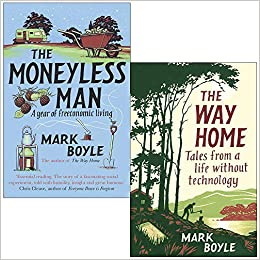
Reading this book at this time has been especially poignant.
With the specter of war lingering ever closer. I’m more concerned about cyber attacks than nuclear attack. Russia could bring the West to its knees with a few nerds and servers, without irradiating the planet.
This, on top of a cost of living crisis in the UK. A crisis thanks to Brexit, COVID, and government failings to secure energy supplies for the future or hold energy companies accountable for their profiteering. They continue to drag their feet on renewable technology, as well as actively removing funding for green technology and price caps on energy. Headline grabs about Heat Source Grants that are rendered useless when most UK buildings aren’t even adequately insulated. It is enough to make you wonder how far you could live your life without the reliance on energy.
What could you change?
I’d love to have solar panels, but without grants to assist it’s out of reach. Just because we are a professional, working couple, doesn’t mean we have ten grand just kicking about to spend on solar panels. The cost of energy would have to increase significantly more for solar panels to pay for themselves within 20 years!
Personally, I’d like to see solar panels on every roof top. A city the size of Bristol has so much unused space on rooftops, I would bet it could be almost self sufficient!
We can all do lots of small things to reduce our energy consumption and there is plenty of advice online about this.
But what if you already unplug everything and have energy saving lightbulbs everywhere?
Would you be able to make a huge mindset shift and stop using (some) technology?
Can you imagine a different life for yourself, one more in tune with nature’s rhythms. One where we can entertain ourselves without need for screens in our pockets and in every room of our homes?
Existential, or philosophical, questions to ask ourselves, perhaps.
If you were going to challenge yourself to give up (or at least reduce) your use of ONE piece of technology, what would it be?
The post A Life Without Technology – How Far Would You Go? appeared first on Amy Morse.
March 2, 2022
Ikigai – A Journey of Purpose
I’ve never been sure about this idea that we have A thing. A gift.
“It’s needlessly limiting to believe that your life should have only one purpose.”(source article: How to Use the Ikigai Diagram to Find Fulfillment (becomingbetter.org))
I’m interested in lots of things and it’s this curiosity and thirst for knowledge that has lead to me start 2022 on a learning journey.
With time on my hands, I’ve been focusing on CPD (Continuous Professional Development).
I’ve bought several creative and business related courses from Domestika and have gradually, privately, been flexing my creative muscles.
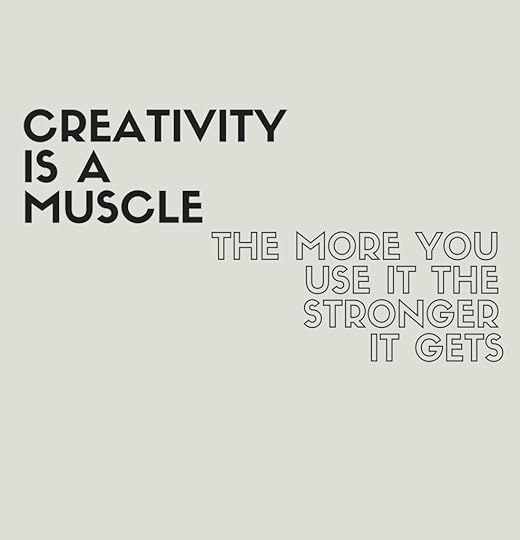
Filling sketchbooks and journals with my experiments and ideas. Learning new things like Lino Cutting and honing other skills in drawing, watercolour and creative play.
While browsing links and follow up information during the course, I was drawn to this blog and the concept of Ikigai.
What Is Ikigai?Ikigai is a Japanese word that loosely translates to “a reason to live” or “reason for being”. It’s a combination of the words iki (生き), meaning life and gai (甲斐), meaning worth.
“Borrowing concepts from other cultures can be a way to open our minds and find a new way of addressing old problems, as well as connecting with our personal and spiritual growth.”
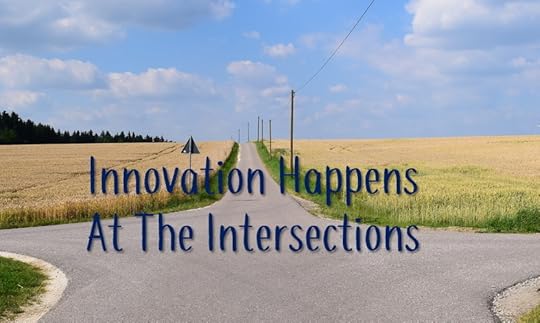
I like this Venn diagram. It’s at the intersections where the real impact happens. When you find something you love doing that also pays the bills.
The Holy Grail for every entrepreneur and self starter. It’s often why we choose the self employed route in the first pace. To earn a living doing what we love.
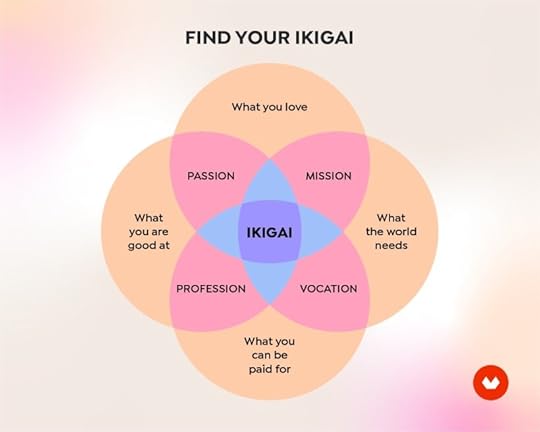
Source: Domestika
“Venn diagram model of ikigai is a westernized misinterpretation of the actual Japanese concept. But there are some very important lessons to be gleaned from the ikigai diagram”(source article: How to Use the Ikigai Diagram to Find Fulfillment (becomingbetter.org))
But what if you love doing lots of things?
That is the eternal struggle!
To use this diagram in a practical way, check out this blog.
The Complexity of Human ExperienceIt would be foolhardy to simplify the complexity of the human experience to suggest that we each only have ONE thing we are meant to do with our lives.
Their probably are people out there who do have ‘a thing’- an Olympic Athlete, perhaps? – but even then, that ‘thing’ may only be the thing during certain stage of their lives.
We will all have differing drivers and differing priorities through the different stage in our life. For example, when children are young a parent may see their only purpose is to raise their child in that stage when they need it.
In reality, it’s not about finding the one thing. It’s in our nature to find satisfaction and purpose in several activities.
“You can do many things in your life, but remember that you only have time to become really good at a few things. Choose wisely.”
Although dedicating your life to a single pursuit has a certain value, a ritual and spirituality to it. Especially when honing a craft to as near perfection as is possible, I doubt this approach to life would suit many of us!
It’d be like deciding what your favourite food is and only eating that your whole life. Neither healthy nor sustainable.
Your purpose is about that constant curiosity and experimentation.
“Develop your ikigai through hard work”
Trying, reflecting on and evaluating different activities that feed those different needs.
That said, the diagram is a useful tool for thinking about how to spend your time. The most important lessons being:
Don’t neglect any of the circles.Aim for the intersections.“The ikigai diagram also lines up with something many a great teacher has said: It’s better to focus on using your strengths than to focus on correcting your weaknesses.”
Recognize and build on the things you are good at and accept that other things will be beyond your capability. And that’s OK. The temptation, especially when you are self employed, is to try to do and control everything yourself. This is mindset will send you down a short road to a long struggle. Know your limits and be OK with being average.
What would you do with your life, if money didn’t matter?
The post Ikigai – A Journey of Purpose appeared first on Amy Morse.
February 24, 2022
Grow Your Own Happiness: A Book Review
I was attracted to this book as I am drawn to the idea of happiness being something you can nurture, grow and cultivate.
When I saw it, I thought it had something to do with gardening for mindfulness or growing your own produce for mental and physical health benefits. However, when I flicked through it, it wasn’t quite what I expected.
So, I picked it up and bought it from the Oxfam bookshop.
I Love A Charity Shop
I always enjoy browsing charity shops for books and other knick-knacks and gifts, you never know what random things you’ll find.
Charity bookshops are especially appealing as there are often weird and wonderful books, it can be a little treasure trove of inspiration. Plus, it’s much more sustainable to pick up a pre-loved book rather than a virgin paper printed one (I still prefer a physical book over an eBook. I know, I’m old fashioned!).
I often find big bookshops, like Waterstones, intimidating and overwhelming. It’s hard to browse when you don’t know what you are looking for.
But bookshops (and libraries) do smell amazing!
What’s it all about?
Written by Positive Psychologist, Deborah Smith, ‘Grow Your Own Happiness’ is a simple and practical handbook with information and exercises to boost your own positive thinking.
What it’s not about?
Growing plants!
Although there is a nod to wellbeing being linked to spending time in nature.
It’s also not promoting positivity no matter what – ‘toxic positivity’, denying or feeling guilty about the dark places within us all.
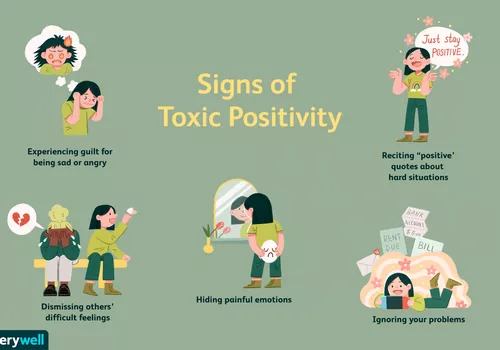
Source: https://www.verywellmind.com/
“It is possible to be optimistic in the face of difficult experiences and challenges. But people going through trauma don’t need to be told to stay positive or feel that they are being judged for not maintaining a sunny outlook.” (Source article)Mindset Shifts
Shifting our mindset to take positive action is an important step to get ourselves unstuck or out of a rut.
It’s easy to get stuck in negative thought loops and to listen to that mean voice in our heads telling us everything we can’t do and we’re no good at – we’re often our worst critics! But shifting our mindset starts with understanding ourselves, our own values, strength, weaknesses and personality. A deeper understanding of ourselves is something of a lifelong lesson. It doesn’t have to be an all consuming process of navel gazing and overthinking.
A few tools, techniques and exercises, such as those int he book, are a step in the right direction. They can also be a bit of fun!
I wanted to try some of them out and share them here…
Meaning and Motivation
The chapter on knowing your M & Ms (meaning and motivation) resonates with me.
When it comes to mentoring micro enterprise. Often, having deep, unwavering clarity your ‘why’ as a business can be the key to unlocking it’s (and your own) potential. It’s the thing that will connect you with your best customers. It is also the thing that will keep you motivated and passionate about the work you do. Even when times are tough.
I’m still figuring mine out and it’s also something that fluctuates.
A good place to start, however is to know your own strengths. These are the things that come naturally to you. This can help to figure out what has the most meaning for you. What you value as a person (and as a business). Your ‘values’ I’ll save for another blog as there are so many great resources out there to clarify those.
I had an idea of what I thought my top strengths were. So, I completed the VIA Survey of Character Strengths survey to see what the computer says…
Signature Strengths: Take the Test
The VIA Survey of Character Strengths is a free self-assessment that takes less than 15 minutes and provides a wealth of information to help you understand your best qualities.
Here are my results:
Reflecting on the ResultsThe issue I have with multiple choice tests, where you say what you are most and least like, is the results can be heavily influenced by the mood you are in at the time.
Although these are pretty accurate for me, I suspect the heavy weighting towards a love of learning has stemmed from the fact that I’ve been doing a lot of short courses recently.
That said, I would list ‘curiosity’ as big part of my personality. If there is ever something to take a sneak peak at, or an interesting looking place to explore. I glimpse something quirky, I have to go and take a look.
I once applied for a job at the National Trust, not because the job especially appealed to me, but because I wanted to be nosy behind the scenes and have access to the secret passageways and private spaces in those old stately homes, castles and museums!
Interesting that Justice/Fairness honesty and hope are high on my list.
This definitely ties in with my increasing awareness and passion for all things sustainable. And why I’ve pledged to go for a year without shopping in supermarkets.
I feel like I need to go eat some M&Ms after that (but I am torn about the single use plastic and ethics of Mars Wrigley Confectionery)!
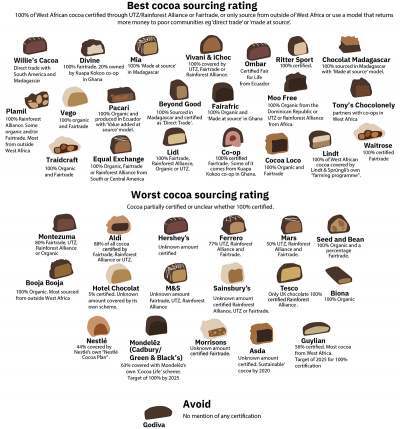
(Source: Ethical Consumer Chocolate Guide)
A Motivational ResourceThis book was my bedtime read. I’d wake up – having processed what I’d read in my sleep – with renewed motivation. Straight to jotting in my journal over breakfast!
For an easy read, with a feelgood factor and tips to practice mindfulness and mediation, this is a worthwhile read.
The post Grow Your Own Happiness: A Book Review appeared first on Amy Morse.
February 17, 2022
Consumers Want Less Plastic Pollution – What Can Supermarkets Do?
A picture can say a thousand words….
That’s a lot of plastic pollution right there!
[image error]
Hey, supermarkets, we don’t want your plastic pollution!
I picked this one up from Greenpeace’s Social Media and it says it all – but I’m still going to qualify it with my own (thousand-ish) words on the plastic pollution because of supermarkets.
What We Want and What Supermarkets Can Do
According to Greenpeace, in a recent poll, 90% of UK customers support the idea of having products free from plastic packaging.
If one supermarket committed to go Single Use Plastic Free it would be a game changer. The others would have to follow suit in order to complete. We’re sick of plastic pollution and supermarkets aren’t doing enough.
In my year without Supermarkets, I’ll be sharing where this journey is taking me. This article by Greenpeace offers six things supermarkets can do to reduce their plastic pollution, and I’ve added my own take.
How supermarkets can halve plastic packaging | Greenpeace UK
Here is what they suggest, plus my own suggestions. I’m no expert, but some of this stuff is obvious, so supermarkets have no excuse not to do it!
Other suggestions are things you can try instead of relying on a supermarket to get what you need.
There Are Plenty of Ways to Avoid Plastic PollutionReuse
Although a lot of plastic packaging claims to be ‘recyclable’, calling something ‘recyclable’ is simply shifting the responsibility to the consumer.
The point is not to continue extracting diminishing fossil fuels from the environment, destroying habitats and creating deadly pollution, to make virgin plastic that probably wont get recycled anyway because there is simply too much of it.
Supermarkets need to stop shifting the blame and take responsibility.
Recycling is the last resort, when all other options are exhausted. Plastic does have value in the appropriate applications, but covering food in a packaging that takes thousands of years to decompose simply to keep it fresh or contained for a few weeks is absurdly disproportionate and irresponsible.
Because plastic takes so long to decompose, it is ideal for reuse. It’s only single use if you use it once.

Making something impossible to reuse is nothing but a cynical and greedy way to extract more money from consumers regardless of the consequences. Such blatant, self-serving, disregard for the consequences of such greed is simply an evil act.
Cosmetic companies in particular are guilty of this. Even vegan or cruelty free products often come in single use plastic. If it comes in single use plastic, calling it ‘cruelty free’ is a lie, when you consider the damage plastic does to wildlife and the environment.
What can You do?Choose the product with packaging that can be reused for something else or refilled. Or make your own.Refill
This is where zero waste shops come into their own and recent trials by Waitrose have proved successful. There is definitely scope for this type of model to be rolled out more widely in supermarkets.
The idea is that the retailer buys the product in bulk, usually dry, long life products such as beans, grains and rice, therefore reducing the need for single use plastic. The consumer brings their own packaging and buys just what they need.
What can You do? Choose to refill your own container instead of paying for unnecessary packing. Not only are jars of colourful food aesthetically pleasing and inviting in your pantry, you can also stock up easily or just buy the amount you need for the recipe instead. Refilling reduces food and packaging waste.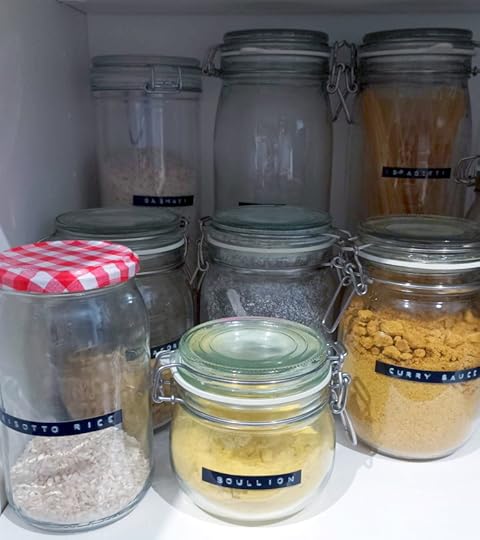
Inside my pantry
Here is a database of Zero Waste shops in the UK. Type in your postcode and look for your nearest shop.
Right now, society treats packaging as something disposable – something that can be used once then tossed away. This mindset has led to the plastic pollution crisis, and moving back to refillable, reusable packaging is the best way to turn things around. (source: Greenpeace)Add
You can buy household cleaning products as concentrate and then add water, or use less of it. There are businesses who specialise in this, such as Splosh (one for me to try myself, I think). They use plastic packaging for the bottles and refills, but you send the packing back to them and they refill it.
What can you do? Look for the concentrated version and add water, instead of paying for excess packing and added water.Loose
Back to the image from Morrison’s. Instead of buying a bag of fruit or veg, just buy what you need, loose.
You can choose the size you want, too. Need a couple of big spuds for jackets and some small ones for a salad? Rather than take a punt on a bag and hope for the best, choose the sizes you want!
Mother nature provides most fruit and veg with it’s own packaging, for the rest, there are better alternatives to keep them fresh and contained.
What can you do?Choose to buy the loose fruit and veg.Or better still, support local business:Shop for loose veg in your local greengrocer, supporting a local family business and keeping your local high street alive.Get your produce from a veg box. Use a community garden scheme. Do something good for your community, support vulnerable people and keep Council land out of the hands of greedy developers so it benefits the residents.Replace
Do you need it? I there a better option?
For example, rather than paying over the odds and contributing to plastic waste by getting individually portioned things, buy the big block of cheese and just use a damn knife!
Do you really need 17 different types of cleaning product? White vinegar, vodka, bicarbonate of soda, lemon juice, apple cider vinegar, water and essential oils will clean and sanitize pretty much anything, without sending toxic chemicals into the water supply or adding to the plastic waste mountain.
I’ll share my recipes on later blogs.
Could you switch to a soap bar instead of a liquid in a plastic bottle? Again, it’s easy and a bit of messy fun to make your own soaps, too.
I’m yet to perfect a recipe for a shampoo bar, but there are plenty of good ones on the market. They work well and last longer – I’d never go back to bottle shampoo after using bars. It takes your hair some time to get used to, remember to lather it in your hands and use the lather instead of rubbing the bar over your hair directly and you can’t go far wrong. They do foam up better if you have softer water (bit of an issue in Bristol with our water coming from the limestone of the Mendips. Bristol is the place kettles come to die!)
What can you do?Before buying your usual brand out of habit, are there better options? Do you even need it (saving yourself money, too)? Or can you make it yourself?Make Your Own
Get better at making it yourself. There are so many thing you can do at home instead of buying from the shop.
Plus homemade food is better tasting and healthier, without all those yucky preservatives excess salt, sugar and MSG.
There are lots of things you can do yourself. Try a few:
Bake your own breadBake cakes, pastries and biscuitsMake your own cleaning products (it’s a lot simpler than you’d think)Deodorant – here’s my recipe (it really works)Soap – you don’t have to make it from scratch, there are melt and pour bases that make it really simplePasta – so simple. Just flour and water or flour and egg for a richer non-vegan version.Get yourself a good recipe book or cruise around on Pinterest then have some fun in the kitchen.
I recently purchased this book and I love it. The freezer cookies are a particular favourite in the Morse house.
Grow your own
This could be a whole other website! There are plenty of tips and great books out there to help you get to grips with growing your own food. Even if you don’t have outdoor space you can still grow your own salad veg, microgreens or herbs on a windowsill.
If you love a book (which I do) here are some of my favouites. I’ve read and loved and acted on all of these books:
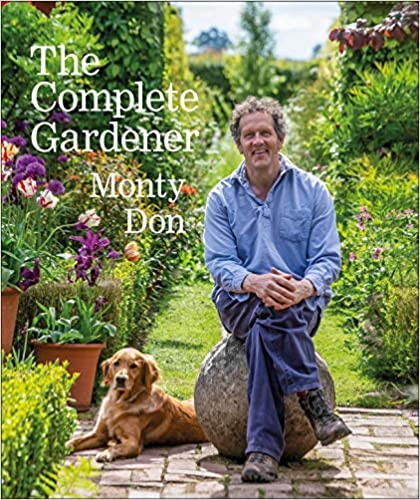
(I’m still reading this one. I do love Monty Don)
RespondTake Action – Sign and share this petition: Plastic waste (greenpeace.org.uk)The evidence is mounting that less plastic is what consumers want. It really is about time the supermarkets started listening to their consumers. I’m doing my year without supermarkets experiment is because I don’t think they are doing enough right now and as a small business mentor I passionately believe we should be spending more of our money locally with local people and supporting our friends, neighbours and local community. Building wealth in our communities.
Your pound has power. Vote with it by being a savvy and ethical consumer.
Write to them.
Social Media shame them.
Return your plastic waste to them.
You don’t have to be as extreme as I have been during this year long experiment, but you can make a difference, if enough of us vote with our wallets!
The post Consumers Want Less Plastic Pollution – What Can Supermarkets Do? appeared first on Amy Morse.
February 9, 2022
I Just Bought Some Expensive Leggings and Here’s Why
I just spent £25 on a pair of leggings.
I could have spent more if I was label or fashion conscious, but already this is more than I have ever spent on a single pair of leggings!
Finding Your Style
I live in leggings. They are a staple of my wardrobe. Cheap and versatile, they pair well with colourful tunics, billowy tops and shift dresses, which I also love.
Dressing yourself is so much easier when you find your style, when you know what shapes and cuts flatter your body shape.
Having a styling session with my friend Gosia a few years back blew my mind. I now shop knowing what will and won’t suit me and that is life changing.
As a curvy girl, it means I no longer buy lots of cheap clothes on the chance they will fit me and suit me, then settle for stuff that is ‘OK’ and maybe only wear it a few times before donating it to a charity shop.
I’m far less wasteful when it comes to clothes than I used to be. Because knowing my style means I can keep my wardrobe paired down to a few essential items that I wear over and over again.
And there’s the rub (pardon the pun). Long lasting clothes are rarely ‘cheap’ and clothes that are cheap are generally unsustainable. For all the same reasons, and more, that cheap food is unsustainable.
Fast Fashion Is Costing The Earth
Our addiction to fast fashion is costing the Earth. In the UK we are buying more fast fashion than ever before, with online sales increasing significantly during COVID. At every stage, each garment has a significant impact on the environment, especially when they are mass produced in poorer countries then shipped around the world on cargo containers. A single container ship produces as much pollutants as 50 million cars in one year. From the production of raw materials that use massive amounts of water and chemicals, to the inhuman working conditions, the whole fast fashion industry is pretty toxic.
The abuse of human rights in the fashion industry is not isolated to ‘other countries’ or ‘poor countries’, it happens here in the UK too. Recent reports of modern slavery in factories in Leicester supplying online retailer BooHoo hit home. A retailer to avoid, Boohoo Group Ltd has a market value of £4.6 billion, yet the brand is lagging behind in terms of workers’ rights.
“We buy more clothes per person in the UK than any country in Europe. Around 300,000 tonnes of used clothes are burned or buried in landfill each year.Even worse – loads of this incinerated clothing has never even been sold or worn. It’s retailers or manufacturers disposing of unsold stock in the most ‘cost-effective’ way possible.Polyester clothing is pumped out, sold and quickly binned, much like single-use plastics. It takes 200 years to decompose.”(Source article: Greenpeace)
Fast fashion is designed to be disposable so we keep spending our money. Following the next trend or ‘getting the look’ of the season – which, by the way, can be 6 or 7 ‘seasons’ in a fashion retailers’ year, so they are constantly rotating, and therefore wasting, stock.
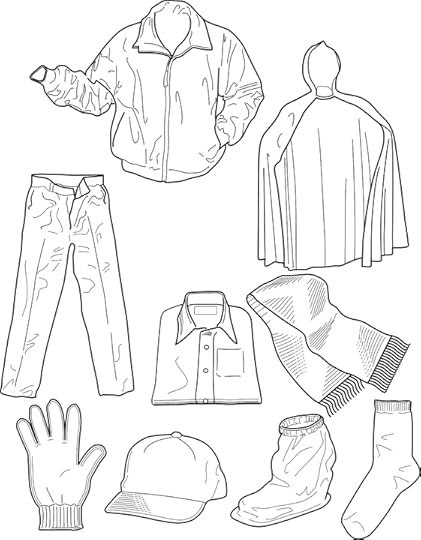
That said, I still get sucked in by sales. A piece of clothing would need to be pretty gorgeous and special and I would need to wear it a lot if I spent more than £50 on it. We’ve been so used to not paying much for clothes for so long that I clearly have a long way to go when it comes to sustainable clothes shopping. When you consider the work, raw materials and fuel, and how many pairs of hands a garment goes through before it is sold – £50 is probably too cheap!
I’m thinking of this purchase as the first step on the way to changing how I think about clothes (as well as food).
You can’t do all the ‘right things’ at once. It takes time, it takes mindset shifts, it takes the developing of new habits.
Baby steps.
My Changing Leggings Habit
I wear leggings until they literally fall apart. I see it as a personal challenge to eek every last bit of wear from them, because I’m just bloody minded like that!
After a few washes they start getting thinner as the microplastics they are made of leach out of them and get washed down the drain. The seams start to split, especially in high wear areas like between my thighs. After a couple months they are usually see-through with gaping holes in the gusset. At which point they are consigned to the gardening and DIY bag, replacing the last pair that ended up in there. They are usually so soiled with paint and dirt etc. they end up in the bin, AKA landfill.
What I had been doing was buying another cheap pair… and the cycle continues.
I usually buy my cheap leggings from a supermarket – George at Asda or Tu at Sainsbury’s.
Ethical Choices
I have pledged to go a year without shopping in a supermarket, and I’m doing so for sustainability reasons. Simply buying cheap leggings from another High Street retailer instead would be pretty trite.
This is another opportunity for me to make a more ethical choice. But also to think long term and save money.
I would typically have bought a pack of 2 leggings from Sainsbury’s for £10, so, my single pair of £25 leggings are the equivalent to 5 pairs of cheap ones. Each pair would last me approximately the equivalent of 3 months of daily use. Therefore, my £25 pair will need to last 15 months.
The £25 pair are made from organic bamboo and organic cotton, therefore they are far more sustainable – and plastic free – than the Tu equivalent. I also actively sought out a business with a commitment to sustainability. I bought them from Thought*.

Read their commitments here.
*By the way, this is not a paid post, nor do I have any affiliate links with Thought.My hope is that by purchasing an item made from strong, natural materials, it will last. If my ethical leggings are still going strong this time next year, I’ll be more than happy.
Thought will also recycle old clothes. And, I can confirm the delivery was plastic free. Even down to not having those horrible plastic little tie things on the label inside the clothes.
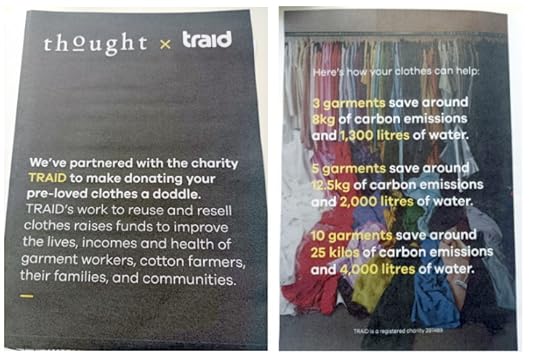
This leaflet was inside my package…
An Ethical Journey
Shopping, and living, ethically and sustainably is a journey.
It’s not about a few of us doing things perfectly, it’s about all of us doing something.
If we each chose to make lots of small changes, consciously, it would make a real difference.
Just One Thing
It can feel overwhelming when there are so many things wrong with modern society. There are so many things we ‘should’ be doing to protect the environment. Lots of small things to make every day life on this planet suck just a little less for its inhabitants. We can all make better choices.
Just start with ONE change. It could be:Eating less meatGoing full veganGoing Zero wasteRejecting single use plasticChanging your energy supplierDriving a more fuel efficient car, or an electric car, or giving up a car altogetherNo longer flyingTaking the bus, or train, or walking, or cycling for short journeysEnding your addiction to fast fashion…What small changes will you make?
The post I Just Bought Some Expensive Leggings and Here’s Why appeared first on Amy Morse.


